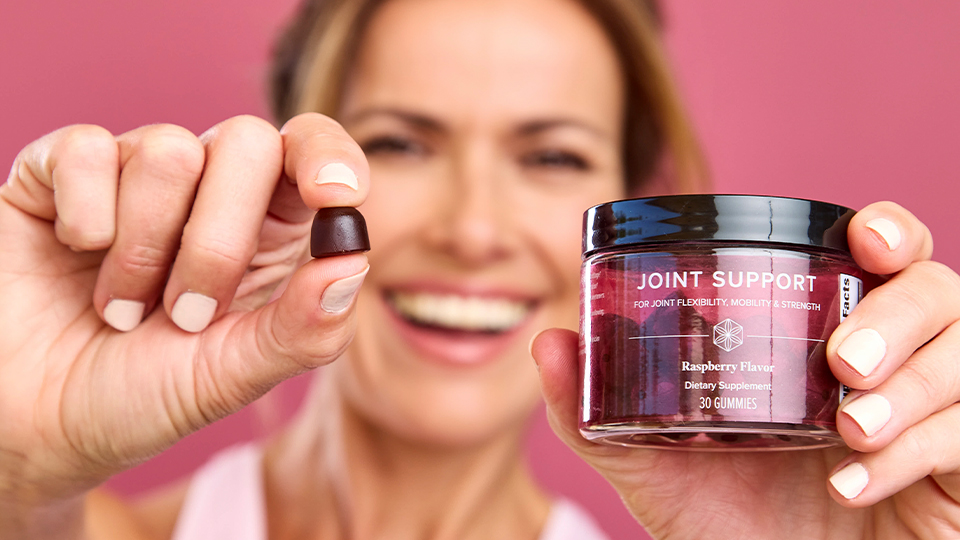This year, it all comes down to you. You put in the work. You put in the time. You see the results.
The science on nutritional timing is sound when you adopt a plan that incorporates real, proven ingredients at dosages that have demonstrated results in clinical research. This is the basis for the high-performance products designed specifically for athletes that make up the AMPED™ (Amplify, Muscle, Performance, Energy, and Delivery) line.
The Isagenix Performance System Guide can help get you started. The system is made up of pre-, mid- and post-workout products.
- Pre-workout products include AMPED NOx and AMPED Power and are intended to be used alongside e+™ energy shots for a boost in energy and stamina throughout your workout.
- Mid-workout products such as AMPED Fuel and AMPED Hydrate are designed to assist you with proper hydration, replenishment of carbohydrates and glycogen sparing, and the fuel you need for that second wind to train and compete longer.
- Post-workout products like AMPED Recover are designed for use alongside IsaPro® or IsaLean® PRO Shake for triggering muscle protein synthesis, supplying the building blocks for muscle growth, and accelerating recovery to get you back to training faster.
Depending on your athletic performance goals, the AMPED™ products can also be customized to suit individual needs. These needs can depend on your sport and whether you’re looking for a greater focus on strength and power, endurance, or muscle gains.
The AMPED line can also be great for the everyday athlete, weekend warrior, or those seeking to get the greatest benefit in a limited amount of time through high intensity interval training (HIIT) or by using the PRISE Protocol.
In a nutshell, here’s how each of the individual AMPED products works using evidence-based ingredients for improving your training and performance:
Pre-workout
- AMPED NOx is a liquid shot containing naturally sourced nitrates and polyphenols that you take on a daily basis prior to workouts to support nitric oxide levels in the blood stream for better delivery of oxygen and nutrients to working muscles (1-3).
- AMPED Power is a drink powder that contains 3 grams per serving of creatine, (one of the best-studied sports supplements on the market) in an appropriate dose shown to be clinically effective for improving muscle strength in bodybuilders, strength athletes, and endurance athletes (4). It also contains Nitrosigine®, a more bioavailable form of arginine, and citrulline to support nitric oxide production for better delivery of oxygen to working muscles (5).
Mid-workout
- AMPED Hydrate is a drink powder containing a modest amount of sugars (glucose and fructose in an easy-to-digest ratio) along with electrolytes, B vitamins and vitamin C. The drink enhances hydration important for performance (6) while helping to spare glycogen, managing electrolyte status, and replenishing nutrients lost during exercise.
- AMPED Fuel is an apple-flavored carbohydrate gel, one of the most well-researched mediums for boosting athletic performance especially in team sports and endurance events (7-11). The carbohydrates are presented in an easy-to-digest glucose-to-fructose ratio and come alongside branched-chain amino acids (BCAAs) that can help delay fatigue and guard against muscle breakdown during events of longer duration.
Post-workout
- AMPED Recover is a drink powder packed with BCAAs (leucine, valine, isoleucine) to help stimulate a greater muscle protein synthesis response. After exercise, these BCAAs act as a trigger for muscle growth (12) when used alongside a protein-rich meal or post-workout protein shake like IsaLean PRO Shake or IsaPro.
It can be hard to separate what works from what doesn’t. For this reason, Isagenix carefully selected the products that make up the AMPED line. Check out the guide. Read up on the science. And don’t forget to make the most of your workouts this year.
Nitrosigine is a registered trademark of Nutrition 21, LLC and is patent protected.
References
- Wylie LJ et al. Dietary nitrate supplementation improves team sport-specific intense intermittent exercise performance. Eur J Appl Physiol. 2013 Jul; 113(7):1673-84.
- Bailey SJ et al. Dietary nitrate supplementation reduces the O2 cost of low-intensity exercise and enhances tolerance to high-intensity exercise in humans. J Appl Physiol. 2009; 107:1144-55.
- Cermak NM et al. Nitrate supplementation’s improvement of 10-km time-trial performance in trained cyclists. Int J Sport Nutr Exerc Metab. 2012; 22:64-71.
- Lanhers C et al. Creatine Supplementation and Upper Limb Strength Performance: A Systematic Review and Meta-Analysis. Sports Med. 2016 Jun 21. [Epub ahead of print]
- Komorowski J & Ojalvo SP. A Pharmacokinetic evaluation of the duration of effect of inositol-stabilized arginine silicate. Presented at the 2016 Experimental Biology Scientific Meeting, San Diego, CA, USA. 2-6 April 2016.
- Sawka MN, Pandolf KB. Effects of body water loss on physiological function and exercise performance. In: Gisolfi CV, Lamb DR, eds. Perspectives in Exercise Science and Sports Medicine: Fluid Homeostasis During Exercise. Indianapolis, Ind: Benchmark Press;1990:1-38.
- Jeukendrup A et al. Carbohydrate-electrolyte feedings improve 1 h time trial cycling performance. Int J Sports Med. 1997; 18:125–129.
- Anantaraman R et al. Effects of carbohydrate supplementation on performance during 1 hour of high-intensity exercise. Int J Sports Med. 1995; 16:461–465.
- Neufer PD et al. Improvements in exercise performance: effects of carbohydrate feedings and diet. J Appl Physiol. 1987; 62:983–988.
- GL Close et al. New strategies in sport nutrition to increase exercise performance. Free Radic Biol Med, Volume 98, 2016, 144–158.
- Anantaraman R et al. Effects of carbohydrate supplementation on performance during 1 hour of high-intensity exercise. Int J Sports Med. 1995; 16:461–465.
- Du M, et al. Leucine stimulates mammalian target of rapamycin signaling in C2C12 myoblasts in part through inhibition of adenosine monophosphate-activated protein kinase. Journal of Animal Science 2007; 85:919-27.





